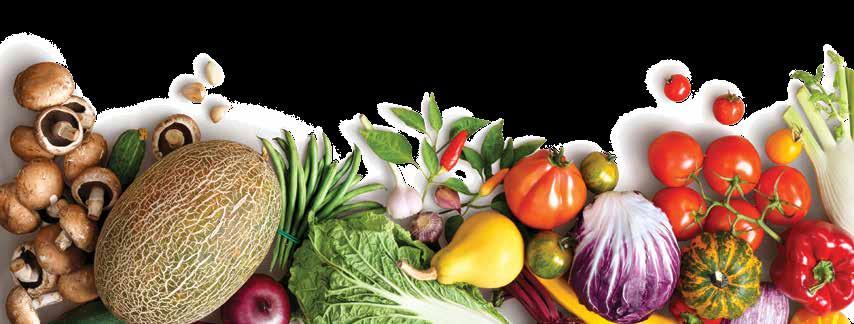
3 minute read
WHEN IN SEASON
Know the best time to buy produce and enjoy the benefits!
When produce is said to be in season, that means it’s at its ripest and most plentiful, making it the best time to enjoy those fruits and vegetables. For example, fruit is in its prime during the summer months in the Midwest. Many berries, watermelons, peaches and plums will be the freshest from July to mid-September or even into October.
Advertisement
Why buy produce in season?
• The produce is cheaper. Unless there has been unusual weather or crops have been damaged, in-season produce will be significantly cheaper than in off-season months.
Check local grocery ads for sales on in-season fresh fruits and vegetables. • In-season produce tastes better. In addition to being picked at peak harvest and ripeness, in-season produce is usually fresher because it has less distance to travel to the grocery store.
• It’s easier to find at your local farmers' market. Buying produce at a farmers’ market also gives you a direct line to the grower, so you can ask questions about the produce and how it was raised.
• Knowing when produce is in season can help you grow your own fruits and vegetables. Even if you’ve got one tomato plant on your porch, it’s still rewarding to eat something you grew yourself.
What if I need produce that’s not in season?
• Frozen fruits and vegetables are a great substitute for fresh produce. Sometimes, it can be more cost-effective to buy frozen. Frozen produce is also picked at peak ripeness and immediately frozen, so you still get a quality product.
• Buy fresh produce in season, then freeze it for later months. According to the USDA, most fruits and vegetables will last 8 to 12 months if frozen from the date of purchase.
• Don't forget about canned goods. Canned fruits and vegetables have a longer shelf life than their fresh or frozen counterparts.
• When buying canned fruit, watch out for added sugars from syrups – fruit is already sweet enough! Instead, look for no-sugar-added or packed-in-juice canned fruit.
• When buying canned vegetables, try to choose products with as little sodium as possible. Look for no-salt added or low-sodium canned vegetables.
Having a recipe for fresh, in-season fruits and vegetables can inspire you to buy and enjoy these healthy foods. Here are some easy summertime recipes for in-season summer produce! By Kate Lohman, MS, RDN, LD, Boone Health Cardiovascular Rehab
The Seasonal Food Guide (seasonalfoodguide.org) is a great resource to look up seasonality of fruits and vegetables by state, month or produce type. You can also download the Seasonal Food Guide app, which includes cooking tips for produce and lets you set reminders when specifi c produce comes into season.
Bluey Smoothie
Recipe from the American Heart Association as part of their Healthy For Good initiative at recipes.heart.org
INGREDIENTS
• 1 cup blueberries, frozen
• 2 cups peaches, sliced, frozen
• 2 cups spinach
• 1 cup milk, fat-free
• 1 teaspoon honey
DIRECTIONS
• Add all the ingredients into a blender.
• Blend until the mixture is smooth, about 1 to 2 minutes, stopping to scrape down mixture if needed.
• Pour into 2 glasses and serve.
Berry Compote

Recipe adapted from the Pritikin website at www.pritikin.com
INGREDIENTS
• 1 cup berries (use your favorite!)
• 1 tablespoon Splenda
DIRECTIONS
• In a saucepan, combine ingredients and cook over medium heat until thickened. Stir occasionally.
• Reduce heat and continue cooking until reaching desired thickness.
• Serve on top of oatmeal, pancakes, ice cream, etc.










